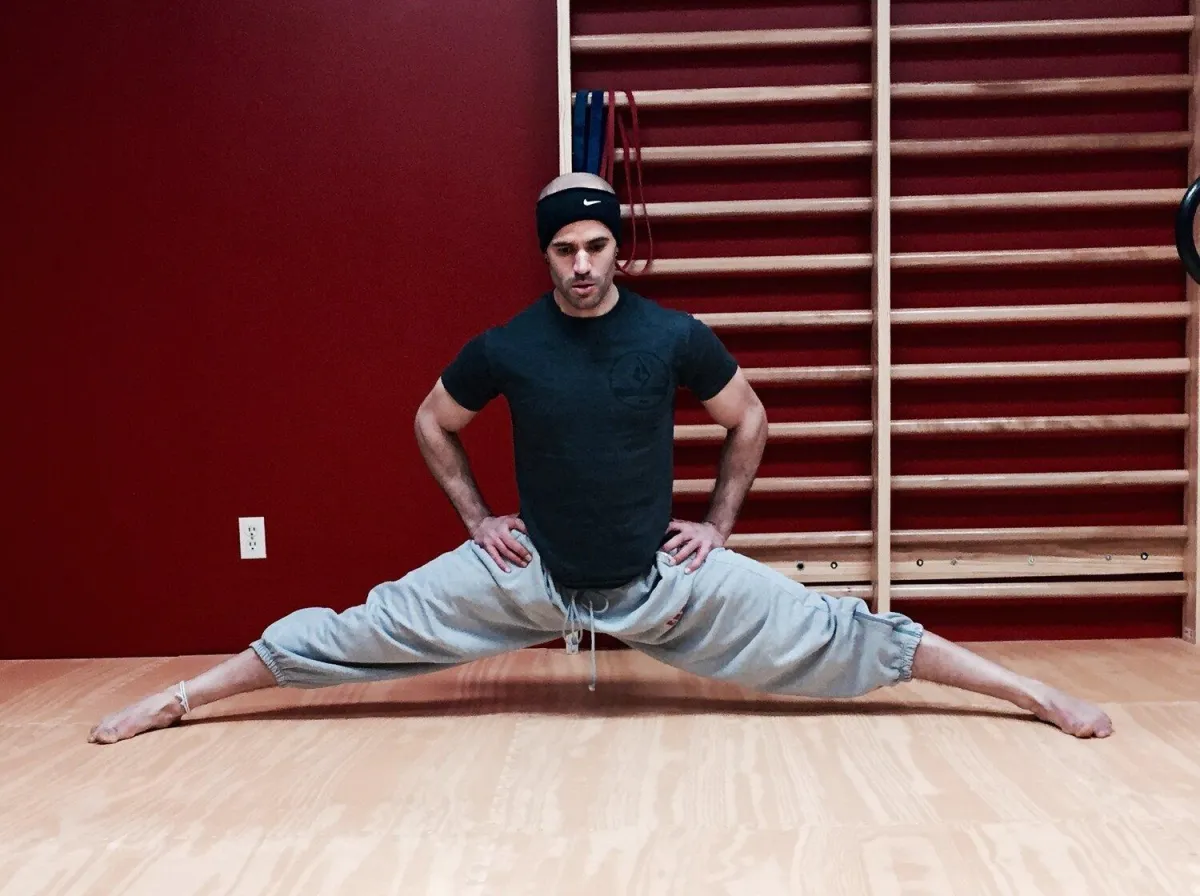
The Risk Of Flexibility Without Strength
How to Avoid Building Flexibility Without Strength
Flexibility without strength is useless at best, harmful at worst. When you have too much flexibility (i.e. when you are too flexible for what your body can handle), your risk for injury skyrockets - because your ligaments are too lax and your body lacks enough strength to support your bodyweight / control the range of motion. Strength and flexibility compliment each other when trained properly. Only a body that is both strong and flexible will truly work at its best.
Whenever we talk about flexibility and training to get more flexible, we usually say “don’t think of stretching”. Here’s why.
Think Joints, Not Muscles
Before we can talk about how to best get more flexible, let’s go over some misconceptions about how the body works. (Don’t worry, this will not be an intensive physiology lesson.)
Muscles Aren’t For “Stretching”
The main function of muscles is to contract and relax. In order to achieve flexibility, aiming to stretch a muscle is pointless, because when you get more flexible, it has very little to do with the muscles stretching. It has to do with your nervous system allowing the muscles to relax in a range of motion.
In order to be relaxed, the joint needs to be functioning properly without restriction. Read on to find out about the joints.
Joint Health Is King
The main gatekeeper to flexibility is actually joints. Joints are essentially space where parts of the body connect. The less space you have at a joint, the more likely you will have a range constricted, and the greater the chance you’ll feel a grinding / pinching / pain signal when you go outside of the range.
The health of a joint will affect how relaxed a muscle can be. If you have unhealthy joints (common problem areas are hips, knees, shoulders, and joints along the lower vertebrae), it is very likely that you could be experiencing excess tension in the connecting areas.
Your muscles won’t relax the way they need to if there is an issue at the joint. For this reason, we concentrate on joint mobility and joint health to improve range of motion; it is almost always a major limiting factor for range of motion issues.
How Joint Health Relates To Muscles
A healthy joint will allow the limb to move freely with the muscles relaxed. When you are without restriction at a joint, your body now knows it is safe to move as much as you want, and with as much force as you want, in any part of that range.
Stretching, on the other hand, can actually weaken the muscle (and sinews), increasing the risk of injury.
The Solution
Joint Wash
To get more flexible, focus your attention at the joints, not muscles. A joint wash is a practice of active directional motions at each joint. Start with a circular motion at the joint, within the largest range of motion you can where you don’t have pain. We call this “washing” or “lubricating” joints - and the higher the volume (i.e. the more repetitions you do in each direction), the better.
The aim is to flush the joint with fluid, get full circulation at the joint, until you reach a point where you hear minimal-to-no clicking, creaking, or popping.
Focus on moving your joints in their greatest range of motion with the most control that you can. Think of fine-tuning the circular pattern. The more control you have at the joint, the more relaxed your muscles will be, and the greater your range will become - and the more flexible you will have at that area.
The best way to use a joint wash is first thing in the morning. You’ve been stagnant all night long, lying down in bed. When you wake up, you have stagnation and likely some swelling at each joint. Doing a quick joint wash (less than 5 minutes) upon waking is an excellent practice to restore joint health and enhance longevity for your body.
You can also use a quick joint wash as a warm-up or cool-down before any kind of activity. It will help you get the most out of whatever you’re about to do, and will minimize likelihood of injury.
Forget “stretching” as a warm-up. All you need is a decompression routine. Try Athletic Suppleness, our pre-fab regimen for flexibility.
Use What You Have
You can easily improve flexibility by getting creative about using your body throughout your day. For instance, to increase leg flexibility, try tapping progressively higher points on a wall. Just move.
Do things on your feet where you’re forced to balance, collaborate with gravity, and employ some strength. Don’t just sit or lay down and stretch statically alone. It’s not optimal.
How To Deal With Pain
Pain isn’t positive or negative. It is just a signal that you’ve reached a point where you might start causing damage if you continue pushing. Remember this new saying: no pain, all gain. While discomfort is fine, you need to listen to pain and never push forcefully through it, especially when training flexibility. Pain will likely cause damage.
If you feel pain at a joint, it can tell you something. Pay particular attention to pain when the angle of the joint is closing. If this happens to you, it could indicate an injury or some kind of structural issue. We suggest seeing a physical practitioner to have imaging done to rule our any major issue.
A Temporary Solution
If you have a suddenly irritated joint, there are tools you can use to immediately create space at the joint, increasing circulation to bring fresh blood to the area, which will help to heal any minor injury.
This is where practices like joint distraction and decompression come into play. It’s important to know that while these practices can certainly speed up recovery from an injury and support healthy tissue, their effects are not always permanent and they’re not stand-alone solutions. The only permanent solution is to learn to move better.
Conclusion
For sport, dance, or general fitness training, you want usable flexibility. Power, athleticism, and explosiveness come from the ability to coordinate as one unit, compress, and manipulate the energy within your system to produce an output.
If you have too much flexibility without the necessary strength to accompany it, your body will be disconnected, and this is where you lose coordination, become inefficient, and increase the likelihood that you will get injured.
Feel free to book an assessment to have your unique situation evaluated.



Copyright © 2019-2025 Athletic Engineering Canada. All rights reserved.
